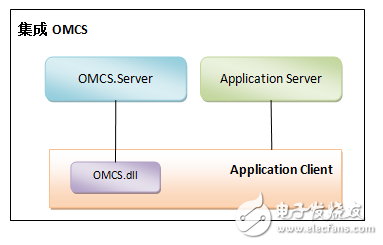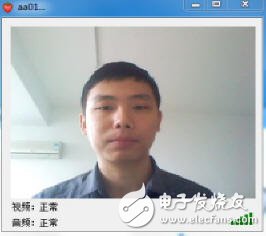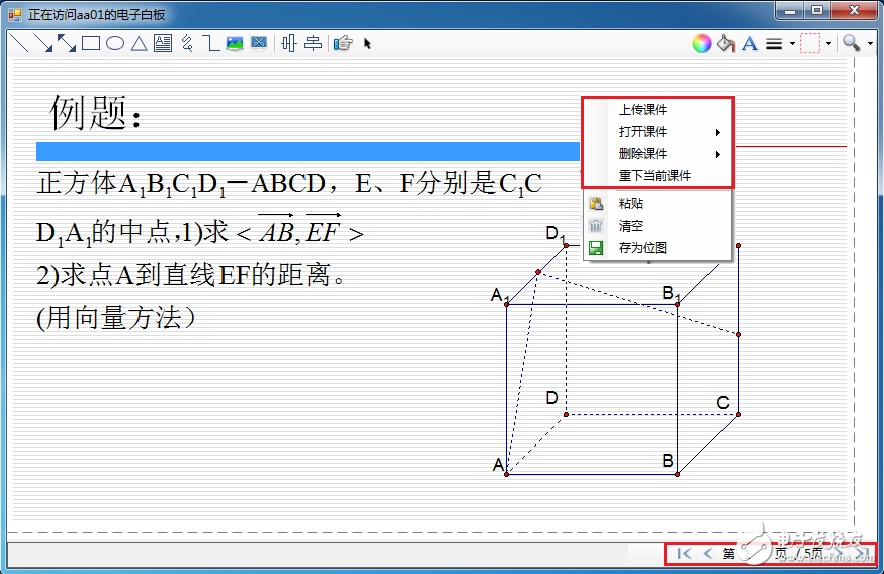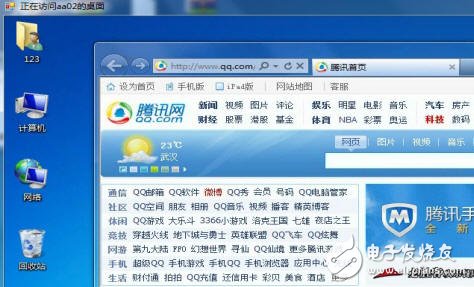The OMCS network voice and video framework is a cross-platform (.NET, Android, iOS) network multimedia framework that integrates voice calls, video calls, remote desktop viewing and assistance, electronic whiteboard editing and viewing, and implements multimedia devices. [microphone, camera, desktop, electronic whiteboard] collection, encoding, network transmission, decoding, playback (or display) and other related processes, and intelligently adjust the frame rate, definition, and priority in real time according to network conditions Voice call effect. As long as you are connected to the OMCS server, you can access any of the online users' multimedia devices at any time. Based on the OMCS voice and video chat framework, you can quickly develop video multimedia systems based on video chat systems, video conferencing systems, telemedicine systems, distance education systems, network monitoring systems, and more. (You can skip the summary introduction and go directly to the development manual directory or Demo download). Introduction to the OMCS voice and video chat framework function
Any OMCS Client has two identities: Owner and Guest.
When a Client is the Owner, it provides local cameras, microphones, desktops, electronic whiteboards and other multimedia devices for other clients to access.
When a client accesses a multimedia device provided by another client, the client appears as a guest.
2. One-way connection, 1 to 1, 1 to N, N to 1, N to N
A client can access multimedia devices of multiple online clients at the same time; a multimedia device provided by a client can also be accessed by multiple other clients at the same time. The basis is a one-way connection (for example, when A accesses B's camera, B does not need to access A's camera), and the one-way connection can be combined into a pair of 1, 1 pair of N, N to 1, N to N relationship, This is very flexible.
A system like monitoring a camera can directly use a one-way connection; two people's video chat is a one-to-one relationship; in an online education system, the teacher speaks to the student, which is a 1-to-N relationship; at the same time, monitoring multiple cameras is N. The relationship to 1; the video conference is "N-to-N relationship."
3.P2P channel
When two clients communicate with each other, the bottom layer of the OMCS will automatically try the P2P connection. If the P2P channel can be successfully created, the subsequent communication between the two clients is performed through the P2P channel. Even if the P2P channel is based on UDP, OMCS will guarantee the reliability of P2P communication.
4. Channel separation
In some specific applications, we may need to separate the channels according to the type of data. For example, in a video conferencing system, it is desirable to be able to separate the channels for transmitting voices to avoid the congestion that may occur when other types of data are transmitted, thereby affecting the fluency of the voice. In this case, we can separate the voice data into a dedicated channel for transmission.
5. Ultra-simple programming model
When developing based on the OMCS voice and video chat framework, if you want to access other multimedia devices provided by the client, we only need to drag the corresponding connector control/component from the toolbox to the UI, and then call its Connect method to connect to the target. The device is OK. The Connect method will return the result of the connection. If the connection is successful, the connector control/component will work normally (for example, the CameraConnector control will display the video captured by the target camera).
In addition, we have provided the complete OMCS server program, OMCS.Server.exe, when you use it, just deploy the program and start it.
6. Integration with the application
OMCS solves only the management, connection, display/playback, control and other issues of multimedia devices, and does not incorporate specific business logic. Therefore, when integrating with a specific application, usually the OMCS server is independent, and the OMCS client dll will be embedded in the client application of the specific application, as follows:

(If you only need to collect local voice and video data, please understand MCapture. If you need to record voice and video, please understand MFile.)
2. OMCS voice video chat frame technical features 1. Video call(1) Supports multiple acquisition resolutions such as 160*120, 320*240, 480*360, 640*480, 720p, 1080p. This resolution can be modified dynamically at runtime.
(2) Support high, medium and low video encoding quality.
(3) Support frame rate 1~25fps.
(4) When the network is congested, the frame is actively discarded.
(5) Automatically adjust the encoding quality of the video according to the network status.
(6) The current video frame can be obtained in bitmap format.
(7) Support a variety of video equipment: ordinary camera, usb camera, virtual camera, video card, etc.
2. Audio call(1) Support high, medium and low audio coding quality.
(2) Supports network voice technology such as echo cancellation (AEC), silence detection (VAD), noise suppression (DENOISE), and automatic gain (AGC).
(3) Support up to 16 channels of mixing.
(4) The adaptive JitterBuffer dynamically adjusts the buffer depth according to the network status.
(5) If the audio and video sessions are simultaneously turned on, the video picture and sound are automatically synchronized.
(6) When the network speed is slow, the quality of the video is automatically adjusted to give priority to the clarity and consistency of the audio.
(7) According to the network status, the voice data is automatically switched to a higher quality network channel to ensure the voice call effect.
3. Remote desktop(1) Support high, medium and low video encoding quality.
(2) Automatically select the frame rate according to the machine performance and the network speed.
(3) The screen resolution can be dynamically adjusted.
(4) Provide two choices of viewing mode and control mode.
(5) When the network is congested, the frame is actively discarded.
(6) Automatically adjust the resolution of the remote desktop according to the network status.
4. Electronic whiteboard(1) Support common view elements: lines, curves, arrows, rectangles, triangles, ellipses, texts, etc.; support up and down alignment of view elements, left and right alignment.
(2) The border color, fill color, line thickness, line solidity, and display scale can be modified.
(3) The picture can be inserted and screened, and the entire whiteboard can be saved as a bitmap.
(4) Support courseware: upload courseware, open courseware, delete courseware, turn courseware, etc. And these operations are automatically synchronized to each client connected to the same whiteboard.
(5) Provide two choices of viewing mode and operating mode.
(6) Laser pointer: OMCS will automatically synchronize the laser pointer position of the teacher/presenter to each client.
(7) Multiple guests can simultaneously view or operate the same Owner's whiteboard.
Three.OMCS Demo running screenshotVideo/audio connector screenshot:

Screenshot of the whiteboard connector -- no courseware:

Whiteboard Connector Screenshot -- Using Courseware:

Remote Desktop Connector screenshot:

A gravity bong, also known as a GB, geebie, bucket bong, grav, geeb, yoin, jib, buckie or ghetto bong, is a method of consuming smokable substances such as cannabis. The term describes both a bucket bong and a waterfall bong, since both use air pressure and water to draw smoke. A lung uses similar equipment but instead of water draws the smoke by removing a compacted plastic bag or similar from the chamber.
Gravity Bong,Bong Shisha Glass,Glass Gravity Bong Pipe,Glass Smoking Water Pipe
Shenzhen Essenvape Technology Co., Ltd. , https://www.essenvape.com